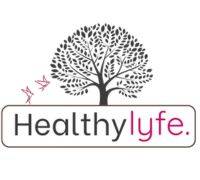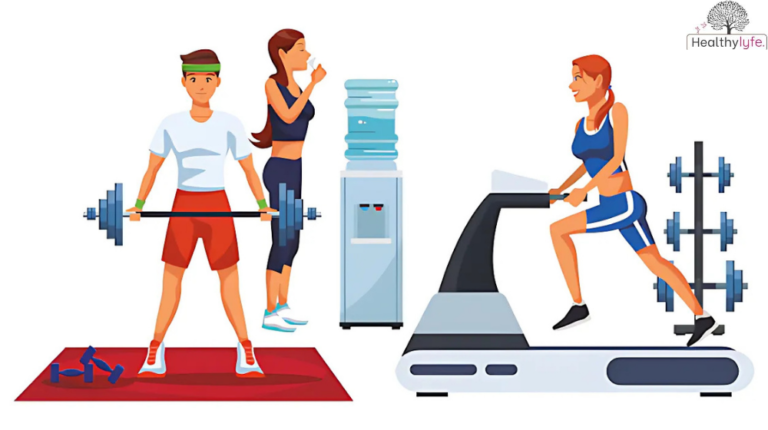Functional fitness workouts help improve strength, mobility, and overall health. Find tips, benefits, and a simple diet plan to support your fitness goals.
Introduction
Functional fitness focuses on exercises that improve your ability to perform everyday tasks. These movements help enhance strength, balance, coordination, and flexibility, making daily activities easier and reducing injury risk.
Functional fitness has become increasingly popular because it offers practical, real-life benefits. People enjoy its versatility and ability to build overall strength while improving movement efficiency.
What is Functional Fitness?
Functional fitness is a type of exercise that focuses on movements you use in everyday life. It helps improve strength, balance, flexibility, and coordination, making everyday tasks easier and reducing the risk of injury.
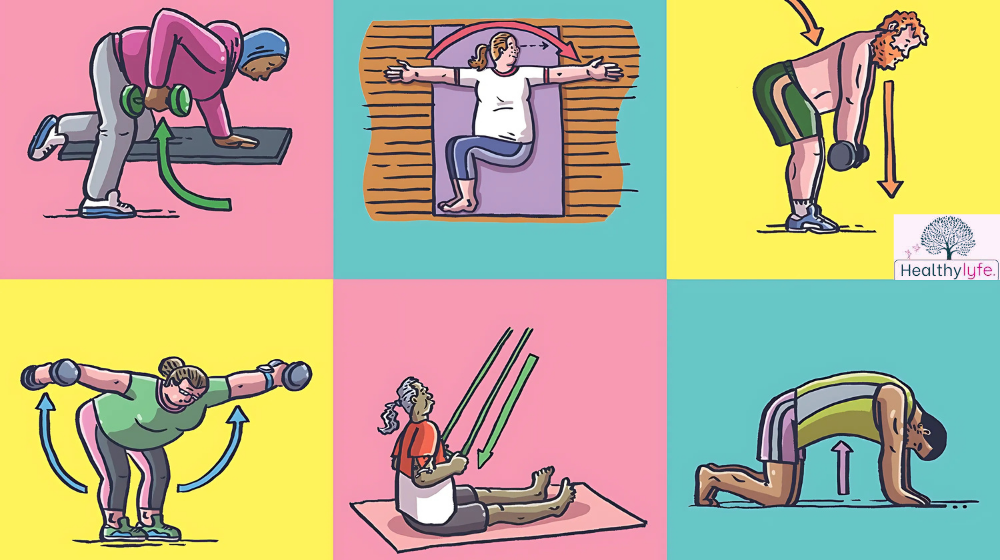
Principles of Functional Fitness
Functional fitness focuses on exercises that help improve your ability to perform everyday movements. These principles include building strength, enhancing flexibility, and promoting overall mobility to keep you active and reduce injury risk.
| Principle | Description |
|---|---|
| Movements Over Machines | Focuses on natural, everyday movements instead of isolating muscles through machines. |
| Real-Life Application | Exercises are designed to mimic real-life tasks for better functionality in daily activities. |
| Balance and Coordination | Improves balance and coordination to prevent injuries and enhance movement quality. |
| Core Strength | Emphasizes building a strong core to support all movements and provide stability. |
| Variety and Versatility | Incorporates various exercises to train different movement patterns for a well-rounded approach. |
| Progressive Overload | Gradually increasing intensity to build strength and improve movement patterns over time. |
Examples of Functional Fitness Movements
Functional fitness exercises are designed to improve strength, balance, and coordination for everyday tasks.
Examples of Functional Fitness Movements
- Squats – Help with sitting, standing, and lifting tasks.
- Deadlifts – Improve the strength needed for picking up heavy objects.
- Push-Ups – Strengthen the upper body for pushing movements.
- Lunges – Enhance balance and strength for walking or climbing stairs.
- Planks – Build core strength to support overall movement.
- Farmers Carries – Boost grip strength and stability for carrying objects.
Benefits of Functional Fitness Workouts [1]
Functional fitness workouts help improve strength, balance, and mobility for everyday activities. They enhance your ability to move efficiently, reduce the risk of injury, and promote overall health and well-being.
Enhanced Daily Movement Efficiency
Functional fitness improves how you move throughout the day. It makes activities like bending, lifting, and walking easier and more natural.
Improved Strength, Balance, and Coordination
These workouts strengthen muscles and improve balance, making it easier to maintain stability and perform physical tasks safely.
Injury Prevention and Rehabilitation
Functional fitness reduces the risk of injuries by promoting proper movement patterns and strengthening key areas, supporting faster recovery.
Boosted Cardiovascular Health
Functional exercises often combine strength with movements that elevate heart rate, improving overall heart health and endurance.
Increased Adaptability for Sports and Physical Challenges
Functional fitness prepares your body for various physical challenges, improving performance in sports and other activities by enhancing flexibility, strength, and agility.
Components of a Functional Fitness Workout
A functional fitness workout focuses on movements that improve everyday activities. It combines strength, mobility, balance, and coordination to help you stay active and reduce injury risk.
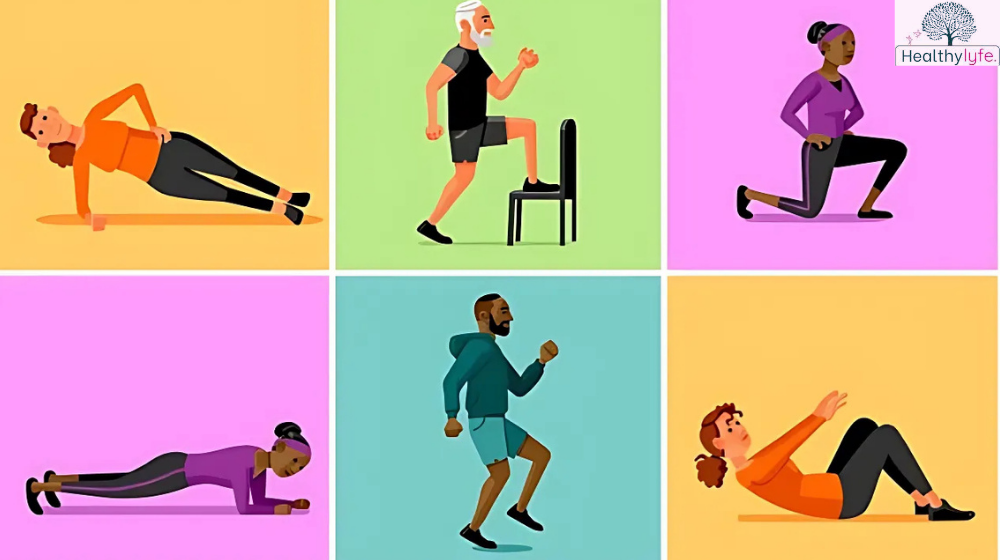
Functional Movements
These exercises simulate real-life tasks like lifting, pushing, and bending. Examples include squats, deadlifts, and lunges, which build strength for everyday activities.
Core Training
Strong core muscles are essential for stability and movement. Exercises like planks, bridges, and abdominal curls strengthen your core for better balance and injury prevention.
Balance and Stability
Exercises that improve balance help maintain control and reduce the risk of falls. Single-leg exercises and stability work are key components.
Mobility and Flexibility
Functional fitness includes movements to increase flexibility and joint mobility, ensuring smooth and pain-free movement.
Cardiovascular Fitness
Many functional workouts include cardio exercises like kettlebell swings and farmer’s carries to boost heart health and endurance.
Tips for Getting Started with Functional Fitness
Functional fitness focuses on exercises that help you move better in everyday life. If you’re new to it, these tips can help you get started and make the most of your workouts.
Start with Basic Movements
Begin with foundational exercises such as squats, push-ups, and lunges. These simple movements help build a strong base for more complex functional movements.
Focus on Proper Form
Proper technique is crucial for preventing injury. Take your time to learn and master each exercise with correct form before increasing intensity.
Include a Variety of Exercises
Functional fitness workouts should include a mix of strength, balance, flexibility, and cardio exercises. Incorporate movements like deadlifts, planks, and balance drills for a balanced approach.
Gradually Increase Intensity
Start with lighter weights or simpler variations of movements, and gradually increase the difficulty as you become more comfortable and confident in your abilities.
Listen to Your Body
Always pay attention to how your body feels. If an exercise causes discomfort or pain, modify it or take a break to avoid injury and promote recovery.
Seek Professional Guidance
Working with a certified functional fitness trainer can help ensure you’re performing exercises correctly and safely, reducing the risk of common mistakes.
Consistency is Key
Consistency is more important than speed or intensity. Regular practice helps you build strength and improve your movement patterns over time.
Common Functional Fitness Tools
Functional fitness tools are essential for enhancing strength, balance, flexibility, and mobility. These tools help improve everyday movements and make workouts more dynamic and practical. Whether you’re a beginner or advanced, using the right tools can take your functional fitness routine to the next level.
| Tool | Purpose | Benefits |
|---|---|---|
| Kettlebells | Build strength, improve grip, and endurance. | Versatile for swings, deadlifts, and squats. |
| Dumbbells | Increase strength, balance, and coordination. | Used for unilateral movements like lunges and presses. |
| Resistance Bands | Add resistance to bodyweight exercises. | Enhance flexibility and small muscle group strength. |
| Medicine Balls | Improve core strength and rotational movements. | Used for wall balls, slams, and overhead throws. |
| Stability Balls | Improve balance, posture, and core stability. | Used in balance drills, planks, and leg exercises. |
| Foam Rollers | Aid recovery and reduce muscle tightness. | Useful for self-myofascial release post-workout. |
| Sandbags | Build functional strength and stability. | Great for carries, presses, and dynamic movements. |
Sample Functional Fitness Workout Plan
Functional fitness workouts focus on improving strength, balance, flexibility, and overall movement efficiency for everyday tasks. This type of training prepares your body for real-life activities while reducing the risk of injury. Below is a simple, well-rounded functional fitness workout plan you can follow to build functional strength and improve your overall fitness.
| Tool | Purpose | Benefits | Examples |
|---|---|---|---|
| Dumbbells | Strength training, balance, and coordination | Builds strength and flexibility, enhances stability | Deadlifts, overhead presses |
| Kettlebells | Full-body conditioning, endurance | Improves strength, cardiovascular fitness, and mobility | Swings, goblet squats |
| Resistance Bands | Flexibility, strength, and rehabilitation | Provides resistance for functional movements | Band-assisted squats, rows |
| Stability Balls | Core stability and balance | Enhances core strength, improves posture | Planks, ball squats |
| Medicine Balls | Strength, power, and coordination | Boosts power, core strength, and overall conditioning | Slams, throws, rotational twists |
| Slam Balls | Full-body conditioning, cardiovascular endurance | Increases strength, endurance, and functional movement | Slam exercises, wall ball throws |
| Bosu Ball | Balance, strength, and coordination | Improves stability, coordination, and lower-body strength | Balance exercises, step-ups |
Functional Fitness and Nutrition: A Perfect Pairing
Functional fitness and nutrition are key elements for achieving optimal health and performance. Combining these two helps you fuel your body for workouts, enhance recovery, and maintain overall well-being.
Fuel for Performance
Functional fitness workouts require energy and strength. Proper nutrition provides the necessary fuel with a balance of proteins, carbohydrates, healthy fats, and essential vitamins to support performance and endurance.
Recovery and Muscle Repair
After functional fitness sessions, your body needs proper nutrition to repair muscles and reduce soreness. Nutrient-dense foods help in muscle recovery and injury prevention.
Balanced Energy Levels
A well-balanced diet supports stable blood sugar levels, ensuring sustained energy during workouts and reducing energy crashes. Whole grains, fruits, and vegetables are essential for maintaining energy balance.
Enhanced Endurance and Strength
Proper nutrition boosts endurance and strength, helping you perform better in functional fitness exercises. Carbohydrates and proteins replenish glycogen stores, supporting overall performance.
Mental Clarity and Focus
Good nutrition is linked to improved brain function. Foods rich in omega-3s, antioxidants, and key nutrients enhance focus and mental clarity, ensuring better concentration during workouts.
Functional Fitness Diet Plan
Maintaining a balanced diet is essential for supporting functional fitness goals, helping with strength, endurance, and recovery.
Functional Fitness Diet Plan: Weekly Guide
| Day | Breakfast | Snack | Lunch | Snack | Dinner | Snack |
|---|---|---|---|---|---|---|
| Monday | Oatmeal with nuts and fruit | Greek yogurt with berries | Grilled chicken salad with quinoa | Hard-boiled eggs with mixed veggies | Baked salmon with vegetables | Cottage cheese and fruit |
| Tuesday | Scrambled eggs with whole grain toast | Banana and almond butter | Quinoa bowl with vegetables and tofu | A handful of nuts | Grilled chicken and sweet potato | Greek yogurt with flaxseeds |
| Wednesday | Smoothie with spinach and protein | Apple with nut butter | Turkey and veggie wrap | Hummus and cucumber slices | Grilled shrimp with brown rice | Dark chocolate and nuts |
| Thursday | Chia pudding with berries | Hard-boiled eggs and avocado | Lentil soup with greens | A piece of fruit | Baked chicken with quinoa | Almonds and dried fruit |
| Friday | Greek yogurt with chia seeds | Pear and walnuts | Salmon and veggie stir-fry | Boiled eggs and veggie sticks | Turkey meatballs with spaghetti squash | Fresh berries with nuts |
| Saturday | Avocado toast with poached eggs | Hummus and carrot sticks | Grilled turkey with sweet potato | Cashews and fruit | Grilled veggies with tofu | Pumpkin seeds and Greek yogurt |
| Sunday | Smoothie with spinach and protein | Apple with almond butter | Grilled chicken salad with quinoa | Hard-boiled eggs and cucumber slices | Baked salmon with asparagus | Mixed nuts and dried fruit |
Key Elements of the Diet Plan
- Protein: Supports muscle repair and recovery (chicken, tofu, salmon, eggs, legumes).
- Complex Carbohydrates: Provide sustained energy (quinoa, sweet potatoes, brown rice).
- Healthy Fats: Enhance performance and overall health (avocado, nuts, seeds).
- Fruits and Vegetables: Offer essential vitamins, minerals, and antioxidants for recovery.
Common Mistakes to Avoid in Functional Fitness
Functional fitness is an excellent way to build strength, mobility, and balance while improving everyday movement. However, like any form of exercise, it’s important to be mindful of common mistakes that can hinder progress or lead to injuries. Below, we’ll explore some of these common mistakes and offer practical solutions to ensure a safer and more effective fitness journey.
Common Mistakes in Functional Fitness and Solutions
Poor Form and Technique
Mistake: Performing exercises with improper form can increase the risk of injury and prevent optimal results.
Solution: Focus on learning the correct technique for each exercise. It’s important to start slow, ensuring your form is accurate before increasing intensity. Working with a certified trainer or watching instructional videos can also help refine movements.
Ignoring Mobility and Warm-Up
Mistake: Skipping warm-ups or neglecting mobility exercises can lead to stiffness, reduced flexibility, and restricted movement.
Solution: Always include a proper warm-up with dynamic stretches and mobility drills before workouts. Mobility exercises like bodyweight lunges, hip openers, and shoulder rotations help prepare your body for movement and reduce the risk of injury.
Overtraining or Not Allowing Enough Recovery
Mistake: Overdoing workouts without adequate recovery can lead to burnout and injuries.
Solution: Incorporate rest days and active recovery into your routine. Active recovery activities such as light walking, yoga, or stretching help reduce muscle soreness and promote healing. Prioritizing proper sleep and nutrition is also key to effective recovery.
Focusing Only on Strength Without Balance
Mistake: Ignoring balance exercises can result in poor coordination and an increased risk of falls or muscle imbalances.
Solution: Include balance-focused movements in your routine, such as single-leg squats, stability exercises, and exercises using balance tools (like a Bosu ball or balance discs). Improving balance enhances overall functionality and stability.
Neglecting Nutrition
Mistake: Poor nutrition can affect energy levels, performance, and recovery. Without proper fueling, progress can be slowed.
Solution: Maintain a balanced diet with adequate protein, complex carbohydrates, healthy fats, and essential nutrients. Eating foods like lean meats, whole grains, fruits, and vegetables supports energy needs and helps with muscle repair and growth.
Training Too Quickly Without Progression
Mistake: Attempting advanced movements without proper progression can lead to injury.
Solution: Start with basic functional movements and gradually increase intensity as your body adapts. Listen to your body and avoid rushing into more challenging exercises before mastering foundational ones. Consistent, gradual progression ensures sustainable progress.
Functional Fitness for Different Goals
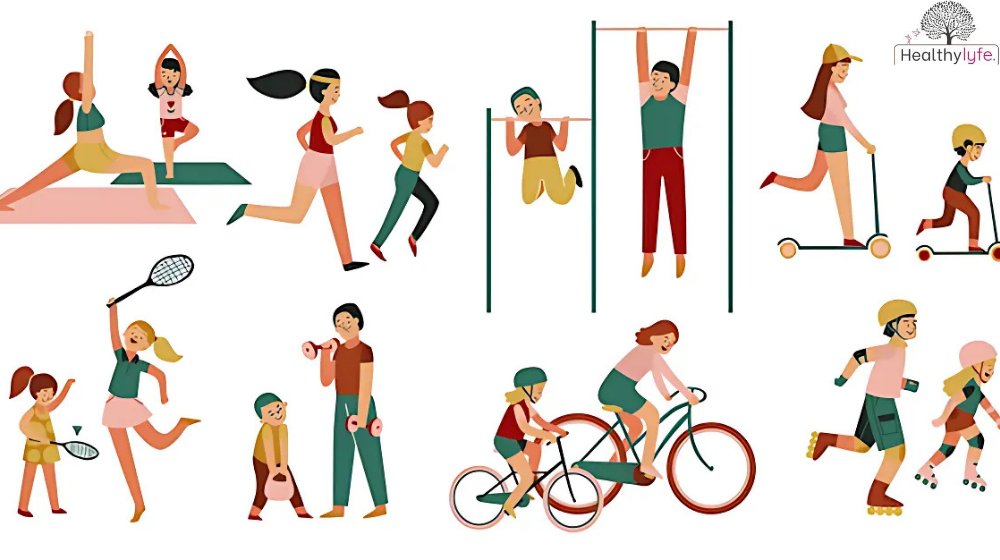
Functional fitness is versatile and can be customized to meet a variety of fitness goals. Whether you’re focused on general health, strength, athletic performance, or weight loss, functional fitness provides a well-rounded approach to improving your physical abilities. Below, we’ll explore how functional fitness can help achieve specific goals and offer simple strategies for success.
General Fitness and Everyday Movement
For those looking to improve overall health and daily movement, functional fitness focuses on exercises that mimic real-life activities—like bending, lifting, and stretching—helping to boost strength, flexibility, and coordination.
Goal: Enhance everyday activities and maintain a balanced lifestyle.
Strategy: Incorporate basic movements such as squats, lunges, and push-ups to improve mobility and stability.
Athletic Performance
Athletes use functional fitness to enhance their performance in specific sports by building strength, power, and agility. Exercises replicate sports-related movements like running, jumping, and quick changes in direction.
Goal: Improve athletic performance, speed, and endurance.
Strategy: Focus on explosive movements, plyometrics, and resistance training for sport-specific skills.
Strength and Muscle Building
For those looking to build muscle and strength, functional fitness includes compound movements that target multiple muscle groups. This helps increase overall muscle mass and improve body composition.
Goal: Build muscle and boost strength.
Strategy: Perform heavy lifts such as deadlifts, squats, and presses, along with accessory exercises for muscle development.
Weight Loss and Fat Burning
Functional fitness can help with weight loss by increasing metabolism and promoting calorie burn. High-intensity interval training (HIIT) and circuit training maximize fat loss while maintaining muscle.
Goal: Lose weight and burn fat.
Strategy: Combine strength and cardio exercises in circuit-style workouts with short bursts of intense effort.
Rehabilitation and Injury Prevention
For those recovering from injuries or preventing future ones, functional fitness focuses on controlled, low-impact movements. These exercises improve mobility, stability, and overall joint health.
Goal: Recover from injury and reduce the risk of future injuries.
Strategy: Perform exercises that emphasize flexibility, controlled movements, and gradual progression.
Mind-Body Connection and Wellness
Functional fitness also supports mental well-being by combining movement with mindfulness. Movements are designed to reduce stress, improve focus, and promote relaxation.
Goal: Improve mental health and emotional balance.
Strategy: Include yoga-inspired movements, breathing exercises, and slow, intentional movements for mental clarity and relaxation.
Conclusion
Functional fitness is a practical and well-rounded approach to exercise that helps improve everyday movement, strength, and overall well-being. It focuses on exercises that mimic real-life activities, making it easier to perform daily tasks and stay active. Whether your goal is to build strength, increase flexibility, lose weight, or prevent injuries, functional fitness offers a balanced solution. By integrating movements that improve mobility, balance, and coordination, you can enhance your physical performance and adapt to physical challenges more effectively.
FAQs about Functional Fitness
What is Functional Fitness?
Functional fitness focuses on exercises that mimic everyday movements, improving strength, balance, coordination, and flexibility for better performance in daily tasks.
What are the benefits of Functional Fitness?
Improved overall strength and mobility
Enhanced balance and coordination
Reduced risk of injury
Increased core stability
Better posture
Greater efficiency in daily activities
How is Functional Fitness different from traditional gym workouts?
Functional fitness targets multiple muscle groups with compound movements, emphasizing real-life motion patterns, while traditional gym workouts often isolate specific muscles.
Who can benefit from Functional Fitness?
Everyone, including beginners, athletes, older adults, and people recovering from injuries, can benefit from functional fitness.
What exercises are included in Functional Fitness?
Common exercises include:
Squats
Deadlifts
Push-ups
Planks
Lunges
Pull-ups
Medicine ball throws
Kettlebell swings
Can Functional Fitness help with weight loss?
Yes, functional fitness workouts can burn calories, boost metabolism, and build lean muscle, aiding in weight loss and overall fitness.
Do I need equipment for Functional Fitness?
Many exercises can be done using just body weight. However, equipment like kettlebells, resistance bands, dumbbells, and medicine balls can enhance the workout.
How often should I do Functional Fitness workouts?
For beginners, 2-3 sessions per week are ideal. As you progress, aim for 3-5 sessions per week, depending on your fitness level and goals.
Can I do Functional Fitness at home?
Absolutely! Many functional fitness exercises, like squats, planks, and lunges, require little or no equipment, making them ideal for home workouts.
How long should a Functional Fitness workout last?
Workouts typically last between 30-60 minutes, depending on intensity and the exercises included.
Is Functional Fitness suitable for older adults?
Yes, it helps improve balance, flexibility, and strength, which are critical for preventing falls and maintaining independence in older adults.
What are the key tips for beginners in Functional Fitness?
Start with bodyweight exercises.
Focus on proper form over speed or weight.
Progress gradually by increasing intensity or resistance.
Rest and recover adequately.
Can Functional Fitness improve athletic performance?
Yes, it enhances strength, agility, and coordination, directly benefiting sports performance.
Is Functional Fitness safe for people with injuries?
Yes, but it’s essential to work with a qualified trainer or physical therapist to modify exercises and avoid aggravating the injury.
What is the role of diet in Functional Fitness?
A balanced diet fuels your workouts, aids recovery, and supports muscle growth. Include lean protein, complex carbs, healthy fats, and plenty of fruits and vegetables.
What are the best pre-workout meals for Functional Fitness?
Oatmeal with fruits
A banana with peanut butter
Greek yogurt with granola
Whole-grain toast with avocado
What are the best post-workout meals for recovery?
Grilled chicken with quinoa and veggies
A protein smoothie with banana and spinach
Salmon with sweet potatoes
Eggs with whole-grain toast
How can I track progress in Functional Fitness?
Monitor improvements in strength, endurance, flexibility, and ease of performing daily tasks. Tracking workout performance or using fitness apps can also help.
Can Functional Fitness help improve mental health?
Yes, it can reduce stress, improve mood, and boost self-confidence through regular physical activity and achieving fitness milestones.
Do I need a trainer for Functional Fitness?
While not mandatory, a trainer can ensure proper form, create personalized workout plans, and help you progress safely and effectively.
By healthylyfe

